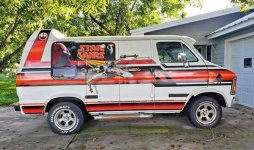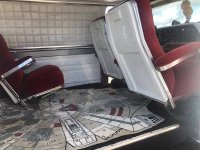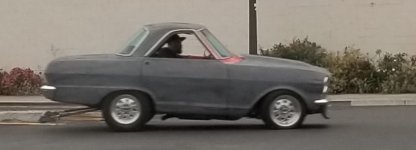Corvette Grand Sport
Corvette Grand Sport photo from the GM Heritage Center
The Corvette Grand Sport was a five-unit version of the C2 built by Chevrolet in 1962-1963. It was initially to be a 100-unit run, but they got caught by General Motors management and had to shut it down.
There's a good account of its very brief history in the book
Chevrolet--Racing? by Paul Van Valkenburgh, who was an engineer at Chevrolet in the 1960s. The book's title refers to the official absence of Chevy from racing (wink-wink) in compliance with a 1950s Automobile Manufacturers Association agreement. The car is also covered in the article
Corvette Grand Sport Takes on the World at the GM Heritage Center, which includes more pics and videos, too. What follows is summarized/plagiarized from Van Valkenburgh's book.
Corvette Chief Engineer Zora Arkus-Duntov had good information that Carroll Shelby's new Cobra would make its first racing appearance at Riverside in October 1962, and he made Stingray racing debut plans accordingly. It was a disaster. For as long as it lasted, the Cobra ran off from all the Corvettes, including the new Stingray. Statistically, it could have been anticipated, since the Stingray was 50% heavier than the Cobra with only 25% more displacement (327 vs 260 in Shelby's prototype). But that was no consolation to Duntov. He immediately got with Chevy general manager Bunkie Knudsen, and they decided on the strategy--a lighter Stingray.
Corvette had a strong reputation at the time. Good amateur drivers were racing them with notable success all across the country, and with a basically capable car, they would need no factory support. To be recognized as a production car by the FIA, Chevrolet would have to build 100 units--a rounding error for the division that sold 2 million cars a year. It couldn't be an obvious
race car, but a lightweight version of the production Corvette seemed to be within the letter of the rule. So Duntov immediately set out to build 100 Stingrays as light as possible, as rapidly as possible.
To begin with, the entire frame was thrown out and redesigned. A simple large-diameter tube ladder frame was constructed. The longitudinal tubes ran directly from the front suspension attachment points to a kickup that mounted the differential assembly. Mounting points for engine, differential, suspension, body, and controls were kept in the same locations but were far lighter than stock. The frame ended at the suspension points because there were no bumpers and no need for structure other than radiator and spare tire supports (the latter required for production cars). Suspension geometry was nearly stock, but all components were fabricated by hand or extensively lightened. It was a work of art.
The body panels were laid up by hand from woven fiberglass cloth, rather than poured in matched molds, and pieces that merely added comfort or convenience were omitted. The doors were literally empty of hardware, with plexiglass windows raised by Velcro straps. Even the stock-appearing dash was gutted.
When it was finished, the first Grand Sport Corvette weighed 1900 pounds, a 37% reduction from the production car. It was assembled in time to take along on a test trip to Florida in December 1962. Mickey Thompson had picked up a production Stingray and was renting the Sebring track to practice for the March race, so he and Duntov shared the track.
However, a little too much information leaked out about the Sebring testing, and GM management announced in January that Chevrolet was definitely
not going to build 100 lightweight Corvettes. The five that were built or under construction were to be scrapped or sold or used as test vehicles, but Duntov had to be very careful because the corporate eye was on him. Sebring came and went, and there was no sign of the Grand Sport Corvettes, so Duntov was out of the doghouse with GM management. While two of the three running cars were sold to privateer racers, Duntov kept the development car to test new engines and suspensions. But it too was soon sold, to Jim Hall, who was not yet famous for his Chaparrals.
In December 1963 at the FIA Manufacturers Cup race in Nassau, all three running Grand Sports showed up, one winning its class and the others dealing with an aero problem that blew the hoods off. When he got back to Detroit, Duntov worked out the aero problem and sold the two remaining cars.
I posted this originally in the 2020 Corvette thread, but it fits better here.







